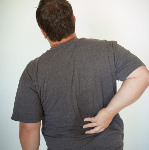By Martin Dwyer, M.S., CFT
Practical applications of periodization in training.
In many parts of North America, Memorial Day Weekend is the time public pools, water parks and beaches open for the summer. Those are the days when the affects of Fall, Winter, and Spring will be brought to bear in the light of the sun.
For many of us, it is the first week of March that we get serious about hitting beach season in form, checking the scales more closely, and properly aligning our diet and exercise to remove excess fat and inches.
Coming to this seasonal training place each and every year reminds me of a training principle used by all those who are serious about hitting their goals, periodization.
Periodization
While it is true that we should maintain our body weight, lean body mass, and other key fitness metrics within a narrow range throughout the year, there is a wealth of training literature to suggest that different types of training are best pursued for limited and alternating periods of time.
Frederick Hatfield, also known as ‘Dr. Squat’, referred to this principle as periodization, which refers to how one’s training is broken down into discreet time periods called ‘macrocycles’, ‘mesocycles’, and ‘microcycles’, with each defined as follows:
Macrocycles represent long-term training cycles usually between six months and a year. Bodybuilders often consider their training cycle to begin and end with key events such as the Olympia Competition each year in September or the Arnold Sports Festival the first week of March.
Mesocycles consist of a period consisting of one to several months within the macrocycle. Consider, for example, a bodybuilder who has a one-year mesocycle to prepare for his one big contest a year. Within that year, he could have a mesocycle to build muscle and lean body mass of several months while at the same time another mesocycle of one to three months to removing all but essential body fat.
Microcycles occur within mesocycles and generally refer to a period less than 7 days. For a bodybuilder currently in a mesocycle to build muscle, it might be beneficial to have a microcycle to focus on a particular area where growth or rehabilitation from injury is needed.
But this approach to training goes well beyond bodybuilding, into competitive sports, and into everyday life.
Competitive Sports
Training cycles are commonplace in competitive sports. A college basketball player will work to build strength and lean body mass in the off season, but the diet and exercise required to build lean body mass will prove detrimental if attempted during the regular season where ongoing physical demands of competition are high.
Because of such seasonal performance constraints, most competitive athletes will have three phases of training; (1) pre-season training, (2) in-season training, and (3) a period of active post-season rest. Of course, this is periodization at work.
Everyday Life
In my post-competitive life I have also enjoyed the benefits of periodization that accommodated two needs. First, as I discussed at the opening, is the arrival of beach season each Memorial Day Weekend. During this season the goals change for a time to fat and inches lost to make chisel and shape body image.
 But periodization also accomodates for mesocycles that are more specific in nature and may even be non-recurring called functional training. A few years back I suffered from back spasms related to an injury from a period of over training. Of course, the first remedy for such an injury is rest and my body needed plenty of rest. But after a few weeks I was ready for the weight room again. The last thing I needed to do at that point was to pick up the heavy weights again.
But periodization also accomodates for mesocycles that are more specific in nature and may even be non-recurring called functional training. A few years back I suffered from back spasms related to an injury from a period of over training. Of course, the first remedy for such an injury is rest and my body needed plenty of rest. But after a few weeks I was ready for the weight room again. The last thing I needed to do at that point was to pick up the heavy weights again.
Instead of picking up the heavy weights, I designed a program with relatively light dumbbells, along with plenty of stretching and range of motion exercises, to rebuild my lower back strength. In a period of a few months, my recovery cycle was complete and I was onto my normal build muscle / burn fat cycles of training.
Seasons of Your Life
Periodization, simply put, is the practice of altering your training for the various seasons and purposes of your life. As a competitive athlete, seasons are often determined by a calendar of scheduled events. Beyond athletics, seasons come and go based on other criteria such a personal endeavors or injuries. To make periodization work for you consider the following three action steps:
- Write down and prioritize the seasons of your life. If you are an athlete this will be straightforward. Beyond athletics look to your interests. If you are an avid hiker, then your seasons should be set with your most rigorous hikes. If a beach goer, then beach season sets your priorities.
- Write down the goals you have for that season. Athletic performance goals work well for the athlete. Endurance goals work well for the hiker. Low body fat percentages work well for the beach goer.
- Set about a plan to design cycles for hitting your goals. For this you may want to contact us or another certified trainer for additional guidance.